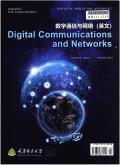A Realistic Power Consumption Model for Wireless Sensor Network Devices
IF 7.5
引用次数: 511
Abstract
A realistic power consumption model of wireless communication subsystems typically used in many sensor network node devices is presented. Simple power consumption models for major components are individually identified, and the effective transmission range of a sensor node is modeled by the output power of the transmitting power amplifier, sensitivity of the receiving low noise amplifier, and RF environment. Using this basic model, conditions for minimum sensor network power consumption are derived for communication of sensor data from a source device to a destination node. Power consumption model parameters are extracted for two types of wireless sensor nodes that are widely used and commercially available. For typical hardware configurations and RF environments, it is shown that whenever single hop routing is possible it is almost always more power efficient than multi-hop routing. Further consideration of communication protocol overhead also shows that single hop routing will be more power efficient compared to multi-hop routing under realistic circumstances. This power consumption model can be used to guide design choices at many different layers of the design space including, topology design, node placement, energy efficient routing schemes, power management and the hardware design of future wireless sensor network devices一个现实的无线传感器网络设备功耗模型
提出了一种实际应用于传感器网络节点设备的无线通信子系统功耗模型。分别确定了主要部件的简单功耗模型,并通过发射功率放大器的输出功率、接收低噪声放大器的灵敏度和射频环境来建模传感器节点的有效传输范围。利用这一基本模型,导出了传感器数据从源设备到目标节点通信时传感器网络功耗最小的条件。提取了两种广泛应用和商用的无线传感器节点的功耗模型参数。对于典型的硬件配置和RF环境,结果表明,只要单跳路由可能,它几乎总是比多跳路由更节能。进一步考虑通信协议开销也表明,在实际情况下,单跳路由比多跳路由更节能。该功耗模型可用于指导设计空间的许多不同层的设计选择,包括拓扑设计、节点放置、节能路由方案、电源管理和未来无线传感器网络设备的硬件设计
本文章由计算机程序翻译,如有差异,请以英文原文为准。
求助全文
约1分钟内获得全文
求助全文

 求助内容:
求助内容: 应助结果提醒方式:
应助结果提醒方式:


